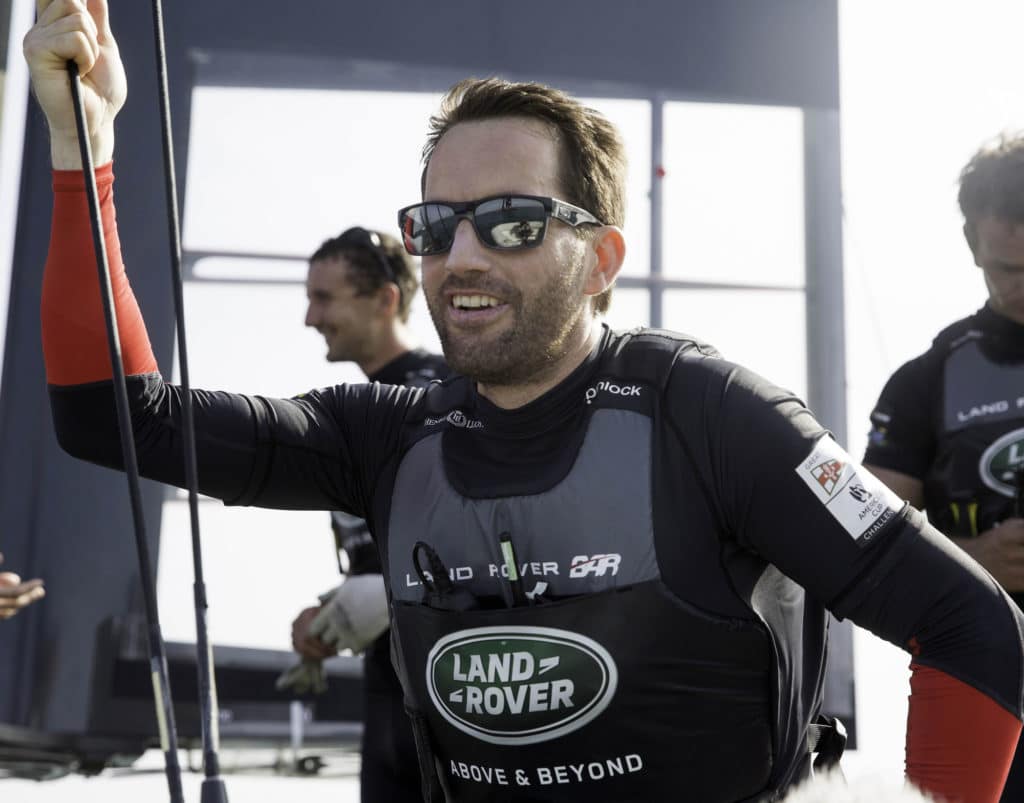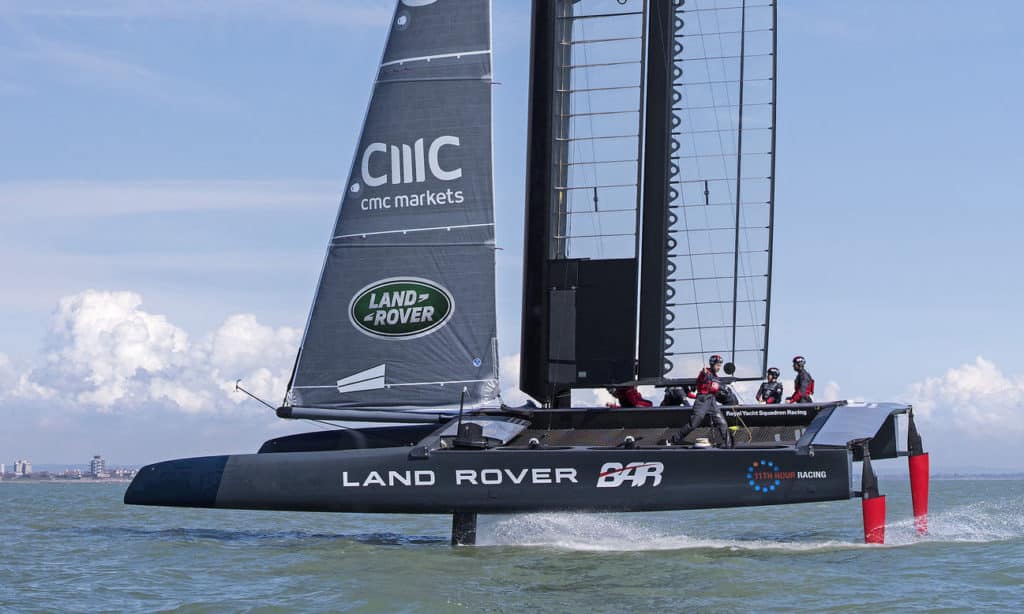
Ben Ainslie at the ACWS Oman
The Louis Vuitton America’s Cup World Series is to New York this weekend where 96 years have passed since America’s Cup racing took place. It was here where Cornelius Vanderbilt’s Resolute, the last of the Nat Herreshoff designed defenders defeated Sir Thomas Lipton’s Charles Nicholson-designed Shamrock IV. Among the six teams will be Britain’s Land Rover BAR, skippered by Sir Ben Ainslie, who observes, “It won’t be quite as far out as Sandy Hook.”
“We are really looking forward to it. Very excited about it. Of course, the racing, such an amazing city, the backdrops to sail on the Hudson. I think it will be a great opportunity for all of us, the sailors and for the America’s Cup brand to be back in New York. No doubt, it is going to be a challenging venue, particularly if the wind blows across Jersey City or Manhattan, but for the sake of being in such an iconic venue as competitors, I think we have got to deal with that, and it will be very special.”
After winning the previous ACWS in Oman, it was suggested that the main challenge would come from Jimmy Spithill with Oracle Team USA, to which Ainslie replies, “Oracle and New Zealand, so far, and ourselves, seem to be getting to grips with the 45s. Different teams have different priorities and I’m sure that is fair to say in terms of the overall development program for next year as well, we are keeping an eye on that. We expect that will be the main challenge, but you know as we have seen, as the events move on and the teams have more time in these 45s, that the racing is getting closer as people get their boathandling and the tuning sorted out.”
With 2 points for the winner of the overall series and one for the second placed team, Ainslie says they’re giving it their all have a bonus going into the America’s Cup early rounds. “You never know,” he says, “it might be the deciding factor at the end of the day so we take the World Series very seriously. For a new team it is important for us to lay down the marker that we are a competitive team and that we have the ability to be successful in this arena.” The win in Oman, which moved the British team to within a point of Oracle, but seven behind the Kiwis, was a great performance, but from now the team will be without Giles Scott, who is on fulltime Olympic focus, aiming to take over where Ben left off in the Finn class, so it raised the question of how different the team will be.
“We will miss Giles, for sure, and we are really excited about the Olympics and supporting him 100 percent in that,” says Ainslie, “but it also gives us the opportunity to rotate some people around, so Matt Cornwell will come in and race with us. A young Ed Powys will also be lining up in the squad for New York so I think that, as a sailing team, it’s the right thing to be able to have strong people to rotate in and out of different positions. The philosophy from day one was to do that, and I think as all these venues are, they will be different challenges.”
In Oman, he says, the team’s starts were not as good as they needed to be. “Probably my own sternest critics will be working really hard on that as it will be a key part of the racing.”

Land Rover BAR’s T3
Most observers put that down to superior boatspeed, but Ainslie points elsewhere: “Ultimately, it is the helmsman who pulls the trigger and puts the boat where it is and it is very, very narrow margins. The last two starts in Oman, you go back into the data they have these days – it was literally centimeters we were over the line; you are over the line and that’s it. They are very narrow margins that you have just got to get right. I was really frustrated with myself in Oman, but the great thing was that as a team we were able to deal with that and still come through and win the event. I think that was a mark of a really strong team.”
Performance, it is agreed, is due to a combination of factors, and Ainslie reveals the latest development in the boat department: “We have launched T3, which has been a great step forward from the design and sailing perspectives and we have really started to throw the boat around. T2, for us, was really a straight line testing boat, it was about the design philosophies rather than actually turning corners, and now we are into that phase of up-skilling the sailing team. We are carrying out maneuvers and developing the overall design package. The next situation is for a testing boat and ultimately the race boat.
“T3 probably looks a lot like what the eventual race boat will be, although it is 5-feet shorter. Of course, like all these boats, it is incredibly innovative with the control systems — the dagger boards that we pin in and out and change and develop will be . . . everyone knows it will be a critical part of the overall performance as well. Understandably there will be comments about the America’s Cup being dumbed down in terms of the technical challenge, but there is still so much that you can develop through these boats – changes with the daggerboards, the rudders, the tips on the daggerboards and the rudders, the control systems, how you set up and trim the wing, how efficient your grinders are going to be dealing with that challenge. Keeping the boat and all its control systems running — I believe there is massive design scope still, and it is really exciting.” But the New York ACWS comes first.









